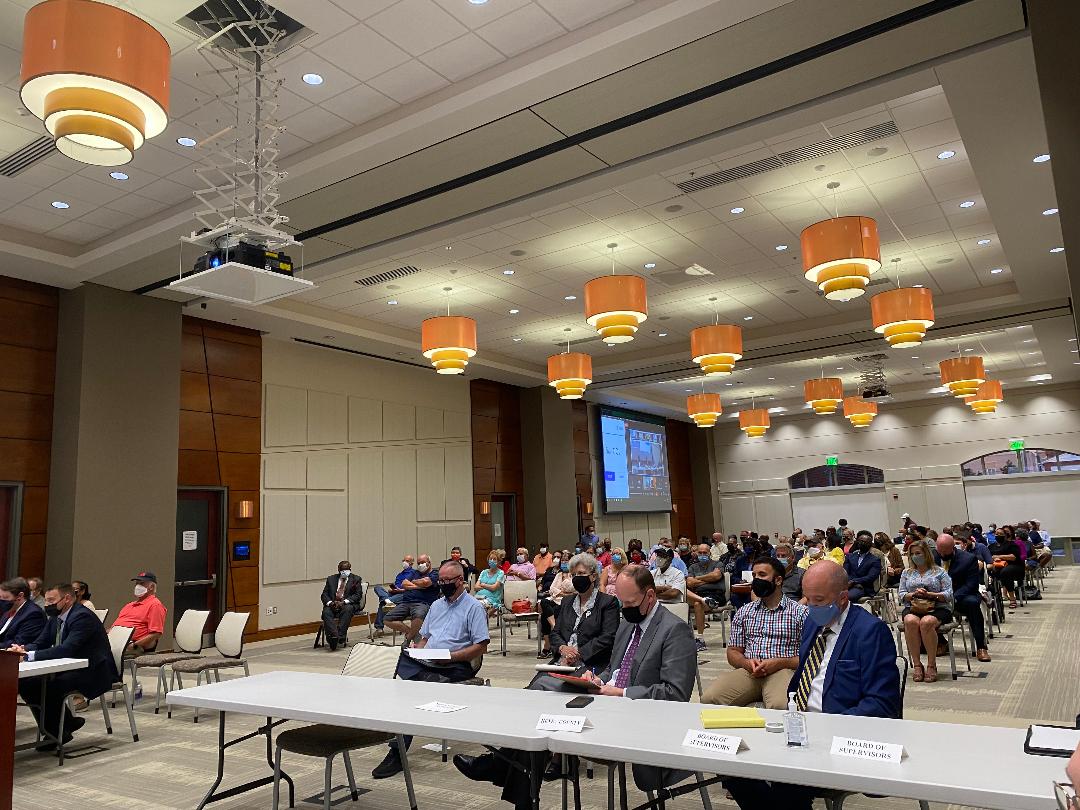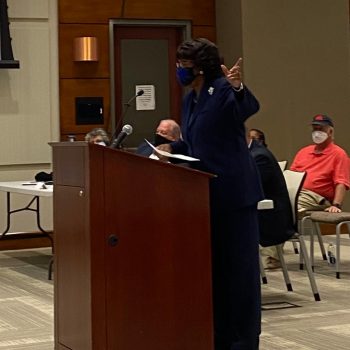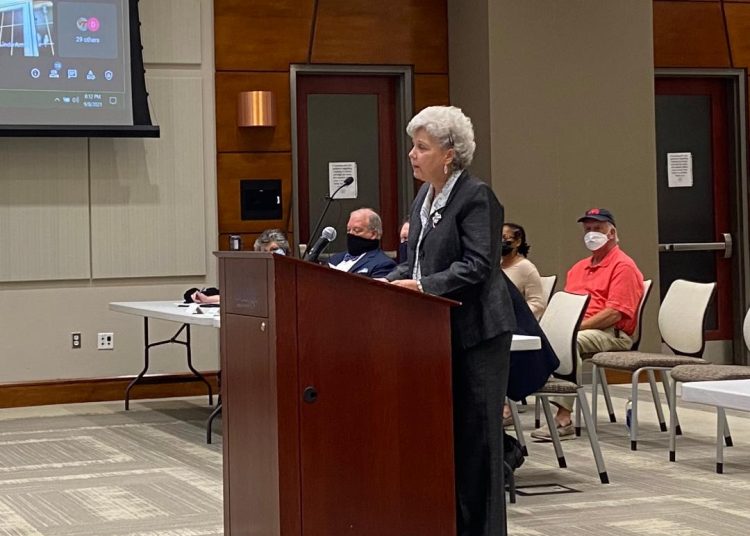
By Callie Hietala
Past reversions may offer a glimpse into the Commission on Local Government’s (CLG’s) report on the City of Martinsville’s proposed reversion to a town.
The commission convened in Martinsville last week to hear testimony from both the city and county, as well as to receive input from residents. During that testimony, the battle lines between city and county, drawn up primarily in closed-session meetings and legal negotiations, became publicly clear.
Although the two localities agreed on a Memorandum of Understanding (MOU), and a subsequent Voluntary Settlement Agreement (VSA), it was obvious during testimony that tensions remained high.
County Attorney George Lyle said, “of the three words” in the title of the Voluntary Settlement Agreement between the two localities, “two of them aren’t really accurate.”
Debra Buchanan, vice chairman of the Henry County Board of Supervisors, said that while she was part of the county delegation to negotiate the agreement, she did not agree with it.
However, both conceded the agreement was the right path forward to avoid costly litigation.
Commissioners also heard concerns raised about equity and representation during and after the reversion process.

Naomi Hodge-Muse, president of Martinsville-Henry County NAACP and president of the Martinsville-Henry County Voter’s League, said “we have not had a Black person on the Board of Supervisors in 30 years. The only power Black folks have in the city and this county comes in the City of Martinsville.”
According to 2020 census data, the City of Martinsville has a majority Black population — 45.2 percent of residents are Black, while 43.9 percent are white. The data also indicated that Henry County has a majority white population, at 68.8 percent, while only 21.9 percent of residents are Black.
The agreement provides for the redrawing of election districts to encompass Martinsville. However, it gives the county’s Board of Supervisors “sole discretion” to redraw those districts, so long as the changes “will result in at least one member of the Henry County Board of Supervisors and at least one member of the Henry County School Board” come from a district drawn entirely within the boundaries of Martinsville.
During testimony, both localities indicated that either office could elect to add more than one Martinsville representative, or simply add more seats, to allow aspiring Martinsville residents a greater chance at winning more than one, though again that would be left to the discretion of the county’s governing bodies.
The commission expects to make the report publicly available on or before October 15.
While the final report for Martinsville’s reversion may substantially differ from those previously issued, the existing reports may be the best indication publicly available as to how the commission will distill the information it received over the course of the two days of testimony in a final report to the three-judge panel.
The CLG falls under the auspices of the Department of Housing and Community Development.
Alexis Carey, public relations director for that agency, said that she was unable to provide details on the degree of specificity contained in the report and could not comment because the commission’s review is ongoing.
However, the CLG’s final reports on previous reversions — those of Bedford, Clifton Forge, and South Boston — are readily available online.
In the previous reversions that included some form of a Voluntary Settlement Agreement such as was approved in Martinsville and Henry County, the localities (Bedford and Clifton Forge) also agreed on an effective date of reversion. In its report, the commission did not remark on the agreed-upon dates or make recommendations contrary to the proposed dates in the agreements.
Equity issues were not directly addressed in previous reports, however one passage in the reports of both Clifton Forge and Bedford contain language (nearly identical in both) suggesting that some consideration is given to the community.

“The reversion of the City town status would preserve (the City) as a distinct and active political entity. The ability of (the City) to retain its separate community identity is an important element in the maintenance of a sense of citizen attachment,” the report stated.
Population demographics in each previous report focus primarily on issues of age, income, and a consistent trends of population decline. No mention of the racial or ethnic makeup of the communities is made.
As to the question of how public comment would be reflected in the final report on Martinsville’s reversion, in each existing report, mention is made that public comment hearings were held. The number of attendees and those who chose to speak were recorded. However, the reports do not include specific testimony received during the hearings.
Among the most interesting details of the commission’s report on the reversion of Clifton Forge references a 12-year annexation moratorium included in the negotiated agreement between those localities. The CLG wrote “One of the major inducements for the reversion of cities to town status is the restoration of municipal annexation authority.”
The commission also noted that Clifton Forge’s “opportunities to attract additional development within its current boundaries are severely restricted by the lack of vacant land for such activity.” Therefore, “the Commission strongly encourages the two jurisdictions to consider reducing the moratorium on future boundary expansions by the proposed town.”
Because each reversion process is tailored to the individual localities involved, the findings of the CLG in its review of Martinsville’s reversion may vastly differ from previous reports on past reversions. However, a review of these reports may be helpful in trying to understand the priorities of the CLG as it examines the evidence.
To view the reports on previous reversion processes, visit www.dhcd.virginia.gov/local-technical-assistance-and-reports-0 and scroll down to the section titled “Reversion from City to Town Status.”




